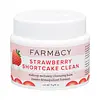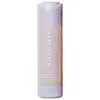What's inside
What's inside
 Key Ingredients
Key Ingredients

 Benefits
Benefits

 Concerns
Concerns

 Ingredients Side-by-side
Ingredients Side-by-side

Cetyl Ethylhexanoate
EmollientCaprylic/Capric Triglyceride
MaskingPEG-20 Glyceryl Triisostearate
EmollientSynthetic Wax
AbrasivePEG-10 Isostearate
EmulsifyingMoringa Oleifera Seed Oil
EmollientCarica Papaya Fruit Extract
Skin ConditioningHelianthus Annuus Seed Oil
EmollientFragaria Ananassa Fruit Extract
Skin ConditioningSorbitan Sesquioleate
EmulsifyingMelia Azadirachta Leaf Extract
Skin ConditioningMelia Azadirachta Flower Extract
Skin ConditioningCorallina Officinalis Extract
Skin ConditioningAmber Powder
Coccinia Indica Fruit Extract
Skin ConditioningSolanum Melongena Fruit Extract
Skin ConditioningCurcuma Longa Leaf Extract
Skin ConditioningOcimum Sanctum Leaf Extract
Skin ConditioningEclipta Prostrata Extract
Skin ConditioningAroma
Phenoxyethanol
PreservativeLimonene
PerfumingLinalool
PerfumingCetyl Ethylhexanoate, Caprylic/Capric Triglyceride, PEG-20 Glyceryl Triisostearate, Synthetic Wax, PEG-10 Isostearate, Moringa Oleifera Seed Oil, Carica Papaya Fruit Extract, Helianthus Annuus Seed Oil, Fragaria Ananassa Fruit Extract, Sorbitan Sesquioleate, Melia Azadirachta Leaf Extract, Melia Azadirachta Flower Extract, Corallina Officinalis Extract, Amber Powder, Coccinia Indica Fruit Extract, Solanum Melongena Fruit Extract, Curcuma Longa Leaf Extract, Ocimum Sanctum Leaf Extract, Eclipta Prostrata Extract, Aroma, Phenoxyethanol, Limonene, Linalool
Helianthus Annuus Seed Oil
EmollientCarthamus Tinctorius Seed Oil
MaskingGlycine Soja Oil
EmollientOctyldodecanol
EmollientButyrospermum Parkii Butter
Skin ConditioningPEG-20 Glyceryl Triisostearate
EmollientBis-Diglyceryl Polyacyladipate-2
EmollientHydrogenated Castor Oil
EmollientTrihydroxystearin
Skin ConditioningDisteardimonium Hectorite
StabilisingAdansonia Digitata Seed Oil
EmollientCitrullus Lanatus Seed Oil
EmollientSambucus Nigra Seed Oil
Cucumis Sativus Seed Oil
EmollientAvena Sativa Kernel Oil
Skin ConditioningTocopherol
AntioxidantRosmarinus Officinalis Leaf Extract
AntimicrobialWater
Skin ConditioningPropylene Carbonate
SolventPhenoxyethanol
PreservativeParfum
MaskingLimonene
PerfumingLinalool
PerfumingHelianthus Annuus Seed Oil, Carthamus Tinctorius Seed Oil, Glycine Soja Oil, Octyldodecanol, Butyrospermum Parkii Butter, PEG-20 Glyceryl Triisostearate, Bis-Diglyceryl Polyacyladipate-2, Hydrogenated Castor Oil, Trihydroxystearin, Disteardimonium Hectorite, Adansonia Digitata Seed Oil, Citrullus Lanatus Seed Oil, Sambucus Nigra Seed Oil, Cucumis Sativus Seed Oil, Avena Sativa Kernel Oil, Tocopherol, Rosmarinus Officinalis Leaf Extract, Water, Propylene Carbonate, Phenoxyethanol, Parfum, Limonene, Linalool
Ingredients Explained
These ingredients are found in both products.
Ingredients higher up in an ingredient list are typically present in a larger amount.
Helianthus Annuus Seed Oil is the oil derived from the seeds of a Sunflower. Sunflower seed oil is non-fragrant. It is an emollient, meaning it helps to soften the skin.
Sunflower seed oil contains many fatty acids. The fatty acids found in sunflower seeds include (from highest amount to least): linoleic acid, myristic acid, palmitic acid, stearic acid, arachidic acid, oleic acid, and linolenic acid.
These fatty acids help the skin create ceramides. Ceramides play a role in repairing the skin barrier.
Helianthus Annuus Seed Oil helps moisturize the skin. This in turn helps the skin look more rejuvenated and smoother.
Sunflowers are rich in vitamin E.
Historians believe Indigenous cultures of North America domesticated sunflowers before corn. Thus they relied on sunflower oil for a variety of uses. One such use is moisturizing skin and hair.
Sunflower seed oil may not be fungal acne safe. We recommend speaking with a professional if you have any concerns.
Learn more about Helianthus Annuus Seed OilLimonene is a fragrance that adds scent and taste to a formulation.
It's found in the peel oil of citrus fruits and other plants such as lavender and eucalyptus. The scent of limonene is generally described as "sweet citrus".
Limonene acts as an antioxidant, meaning it helps neutralize free radicals.
When exposed to air, oxidized limonene may sensitize the skin. Because of this, limonene is often avoided by people with sensitive skin.
The term 'fragrance' is not regulated in many countries. In many cases, it is up to the brand to define this term. For instance, many brands choose to label themselves as "fragrance-free" because they are not using synthetic fragrances. However, their products may still contain ingredients such as essential oils that are considered a fragrance.
Learn more about LimoneneLinalool is a fragrance and helps add scent to products. It's derived from common plants such as cinnamon, mint, citrus, and lavender.
Like Limonene, this ingredient oxidizes when exposed to air. Oxidized linalool can cause allergies and skin sensitivity.
This ingredient has a scent that is floral, spicy tropical, and citrus-like.
Learn more about LinaloolPeg-20 Glyceryl Triisostearate comes from Isostearic Acid and glycerin.
It is an emollient, emulsifier, and gentle cleanser. As an emollient, it helps trap moisture to keep skin soft and hydrated. Emulsifiers help prevent ingredients from separating.
This ingredient is common in oil-based products. This is because it helps oil-ingredients be easily washed away without leaving a residue.
Peg-20 Glyceryl Triisostearate may not be fungal-acne safe.
Learn more about PEG-20 Glyceryl TriisostearatePhenoxyethanol is a preservative that has germicide, antimicrobial, and aromatic properties. Studies show that phenoxyethanol can prevent microbial growth. By itself, it has a scent that is similar to that of a rose.
It's often used in formulations along with Caprylyl Glycol to preserve the shelf life of products.